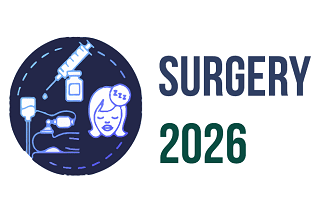4th International Conference on
Surgery and Anesthesia
November 26-27, 2026 | Dubai, UAE

Surgery 2026

Wachemo University, Ethiopia
Abstract:
Background: Paediatrics requires more oxygen than do adults, which affects how rapidly the body desaturates following apnoea. Children with anatomically complex airways are more likely to experience unfavourable airway events. These adverse events include hypoxemia, bradycardia, cardiac arrest, severe airway damage, and death. The objective of this study was to determine the incidence and predictors of intraoperative hypoxemia and bradycardia in paediatric patients.
Methods: A single-arm prospective single-centre cohort study with meticulous random selection was conducted on 422 pediatric patients. Data entry and analysis were performed with the Statistical Package for Social Sciences (SPSS) version 26.00 software. For logistic regression, the Hosmer–Lemeshow goodness-of-fit test was applied. Binomial logistic regression and multivariate analysis were used. Pearson’s chi-square test was used to determine the correlation between variables, with p < 0.05 indicating statistical significance.
RESULTS: The incidence of intraoperative hypoxemia was 33.3%. Pediatric age (
Biography:
Updating soon...
